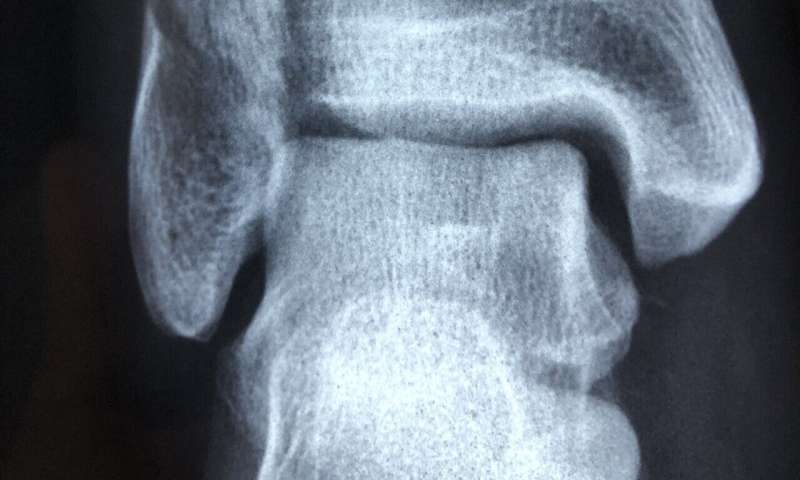
A new study, which analyzed 40 years of Framingham Heart Study data, found an association between lowered rates of hip fractures and decreases in smoking and heavy drinking.The rates of hip fractures in the United States have been declining over the past few decades. Although some experts attribute this change primarily to improved treatments for bone health, a new National Institutes of Health-supported study suggests other factors. These results indicate that modifiable lifestyle factors, along with treatments, may be beneficial to bone health. The findings appear July 27, 2020 in JAMA Internal Medicine.
Timothy Bhattacharyya, M.D., a researcher with the National Institute of Arthritis and Musculoskeletal and Skin Diseases (NIAMS), part of NIH, led the analysis to determine what may be causing the drop in hip fracture rates. The research team included scientists from NIH’s National Cancer Institute, the Hinda and Arthur Marcus Institute for Aging Research, part of the Hebrew SeniorLife, Beth Israel Deaconess Medical Center, Boston, and Harvard Medical School, Boston.
The analysis included information from 4,918 men and 5,634 women who participated in the Framingham Study. These individuals were followed for a first hip fracture between Jan. 1, 1970, and Dec. 31, 2010. The rates for hip fractures, which were adjusted for age, dropped by 4.4% each year across the 40-year study period. The decrease was seen in both men and women.
In this group, the rate of smoking decreased from 38% in the 1970s to 15% in the period from 2006 to 2010. During the same period, heavy drinking (defined as three or more drinks per day) fell from 7% to 4.5%. The rates of other risk factors for hip fracture, such as underweight and early menopause, did not change over the study period.
“This study points to the continued need for public health interventions to target modifiable lifestyle factors such as smoking and drinking, in addition to considering osteoporosis treatments in individuals at risk of hip fractures,” said Bhattacharyya.
“As we learn more about lifestyle factors that impact bone health, we continue to conduct research aimed at understanding all the factors that contribute to reducing fractures, including both lifestyle and medications, so that we can all live longer lives without disability,” Robert H. Carter, M.D., acting director of NIAMS, added.
The Framingham Heart Study launched in 1948 to determine factors that contribute to cardiovascular disease. The National Heart, Lung, and Blood Institute, assumed responsibility for the project in 1949. Though many of the original participants have passed away, the study continues to examine another two generations of residents in and near Framingham, Massachusetts.
Source: Read Full Article





